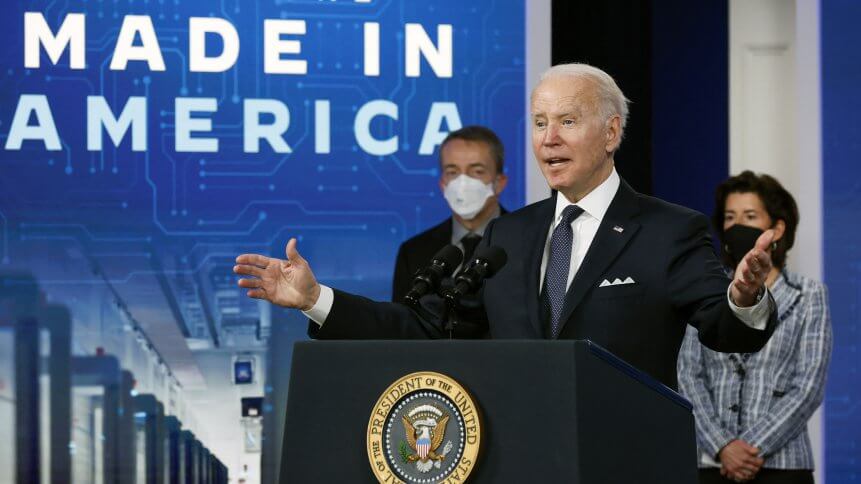Has the global chip shortage turned into an oversupply crisis?

- The chip crisis will see normalization and balance by the middle of this year, according to IDC
- There would however be a potential for overcapacity in 2023 as larger-scale capacity expansions begin to come online towards the end of 2022
In 2021, sales within the global semiconductor industry topped half a trillion dollars for the first time ever. It took the industry 50 years to surpass the US$500 billion mark and when it eventually did, it sold a record 1.15 trillion semiconductor units within a year. Better yet, estimates signal that 2022 could be the first time in decades that the industry posts a third straight year of sales increases.
The exponential growth outlook is anything but baseless — in fact, industry experts see it as its vicious cycle of chip shortfalls playing out and deepening into a crisis. Demand surges, then chips fill up warehouses and supply chains, followed by massive expansions as capital expenditures also see huge spikes.
The huge jump in capital expenditures for chipmakers can only be justified by the expectation that global demand for semiconductors will keep rising. This year alone, chipmakers are on track to spend US$152 billion on new fabs and production equipment, up from $113.1 billion last year. On a percentage basis, this is a 34% year-on-year increase, which is the strongest YoY growth since 2017, IC Insights report shows.
For starters, the sharp increase in the demand for semiconductors is often cyclical. For this cycle, as the global workforce shifts online, the pandemic has unleashed strong pent-up demand for electronic products, thus triggering a chip crisis. With a spike in demand like never before, came stockpiling which eventually resulted in transportation bottlenecks.
The rapid increase in demand even ignited governments in several major economies to allocate huge funds to help boost domestic chip production, and eventually reduce reliance on others. The world’s top buyer of chipmaking equipment, China, has allocated US$1.4 trillion for its strategic industries, including semiconductors until 2025.
Then there’s also the US, EU, Taiwan, Japan and even South Korea that announced measures worth billions of dollars to protect against another chip crisis made worse by supply chain disruptions, and to reduce reliance on production in Taiwan. China for instance is ramping up its own investment to achieve a goal of 70% self-sufficiency in semiconductors by 2025.
The country is the biggest consumer of chips globally, forming 35% of global semiconductor demand even though its companies only produce 6% of global supply. Most market analysts have never witnessed this current level of government funds poured into the semiconductor sector, until now, when it’s all happening simultaneously.
In terms of players, the world’s biggest contract manufacturer, Taiwan Semiconductor Manufacturing Company (TSMC), is expecting to spend up to US$44 billion on new capacity this year. The amount is an increase from the US$30 billion in 2021, triple the number in 2019, and ahead of earlier plans to spend over US$100bn in total over the next three years.
Then there is Intel with plans to spend US$28 billion this year, on top of the two big new factories in Ohio for 2025 onwards, at a total cost of US$20 billion. The American chip giant is even considering building six more in Ohio, bringing their overall expenditure there to US$100 billion. Samsung, TSMC’s rival, has hinted that its capital spending for 2022 will surpass last year’s US$33 billion.
Even smaller firms like Infineon in Europe, are splurging. In simple terms, it is inevitable that this would eventually lead to an imbalance in supply and demand. While the many expansion plans may sound promising, they may just result in long-term oversupply — especially at the lower end of the industry. SEMI, an industry organization, has even estimated that by the end of this year alone, construction on close to 30 new fabs will start.
It is predicted that the global semiconductor equipment investment for front-end fabs, where the silicon wafers are processed, will be nearly US$100 billion this year after topping $US90 billion last year — both records. This will mark a “rare three consecutive years of growth that began in 2020, bucking the historical cyclical trend of a one or two-year expansion followed by a year or two of tepid growth or declines”, SEMI said.
Even research group IDC in September 2021 shared the same stance. It said the semiconductor market is on course to grow by 17.3% in 2021 versus 10.8% in 2020, with growth driven by mobile phones, notebooks, servers and cars. But the potential for overcapacity in 2023 is there, as large-scale capacity expansion would mostly go online by the end of this year.









